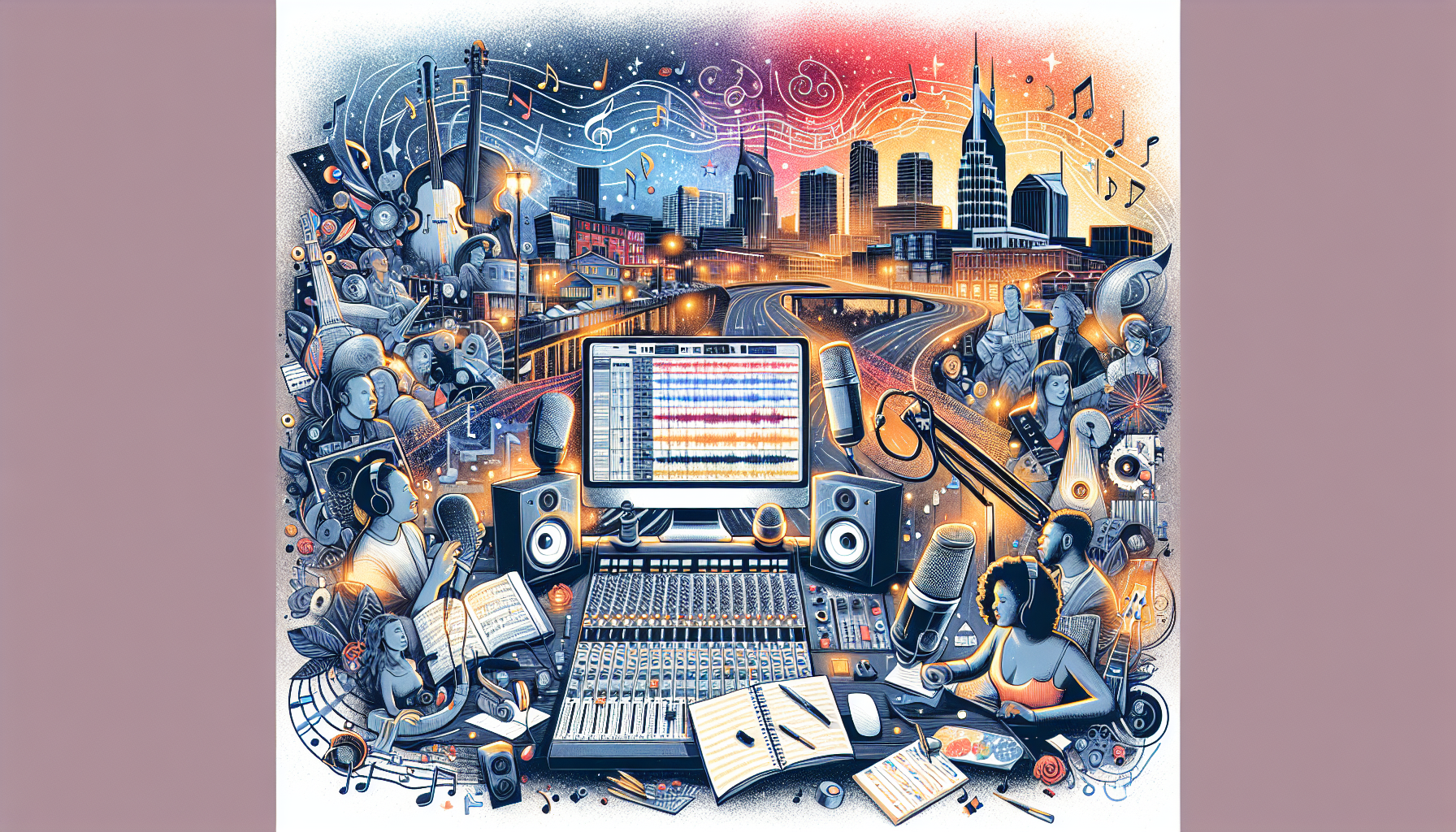
Inside the world of Nashville producers
Picture this: you step into a studio in East Nashville, where the atmosphere feels like a fusion of a retro record store and a spacecraft. That’s the vibe these producers are vibing with. I joined a session with one chap who had six synthesizers, three guitars, and a dog that barked in perfect harmony—cross my heart. The studio ambiance was dim, coffee was abundant, and each twist of a knob was akin to tuning the essence of a track.
These producers do more than just adjust faders—they’re part counselor, part audio magician. One producer shared that he spends more time discussing artists’ romantic splits than recording vocals. But that’s the enchantment, mate. It’s not merely about the equipment (though, believe me, there’s an abundance of that too), it’s about crafting a space where artists can unleash their emotions freely.
“We’re not chasing perfection. We’re pursuing truth,” remarked one seasoned producer while layering harmonies so beautiful they could bring a tear to your mother’s eye.
As for the schedules? Total madness. One day features a 10 a.m. gospel choir, the next is midnight tracking with an indie rock group that brings kombucha and a didgeridoo. Adaptability is crucial. These producers navigate genres like it’s a vast musical feast—country, pop, hip hop, and even a splash of bluegrass trap (yep, that’s a thing now).
- They’re collaborating with songwriters from every corner of the globe—Zoom calls at 3 a.m. are basically the norm.
- Many are advocating for more analog in a digital era, resurrecting tape machines as if it’s 1978.
- Gear envy is palpable—every studio visit turns into a showcase of pedalboards.
But the real insight? These individuals are the underrated champions of the Nashville sound. They might not be in the spotlight, but without them, the hits would simply fall flat. Whether they’re hunting for that perfect snare tone or guiding a rookie artist through their initial take, they’re doing it with zeal, accuracy, and yes… probably a dash of whiskey on the side.
Shaping the sound of Music City
Alright legends, now we dive into how the unique sound of Nashville is crafted from the ground up. It all starts with the vibe. Producers here aren’t just booting up Pro Tools and crossing their fingers—they’re molding sounds as if they’re shaping waves at Bells Beach, mate. Every snare hit, every vocal take, every tangled pedalboard is part of a larger sonic narrative.
The sound of Music City is not confined to a single genre. It’s not just cowboy boots and steel guitars anymore (though there’s still plenty of twang in the air). Nowadays, it’s about merging the traditional with the contemporary—like layering a fiddle over a trap beat or running a lap steel through a fuzz pedal that sounds like it’s warping your amplifier. It’s chaotic, but in the best possible way.
One producer I hung out with was working on a track that genuinely featured a banjo looped through a modular synth setup. He dubbed it “Appalachia meets outer space.” A daring choice, but somehow it clicked. That’s the essence—take a chance for the reward, and you might create something entirely fresh.
“If it sounds too clean, we mess it up. If it sounds too chaotic, we uncover the soul within it,” another producer shared while adjusting a reverb that made the drums echo as if recorded in a canyon.
There’s also a significant movement to respect the city’s heritage while still propelling it forward. You’ll hear plenty of analog warmth—tape hiss, tube saturation, real drums bleeding into vocal mics. Concurrently, producers are experimenting with AI plugins and Dolby Atmos setups that could leave you dizzy. It’s as if Nashville is jamming with both the future and the past simultaneously.
- Pedal steel melodies are being side-chained to synth bass lines.
- Vocals are recorded in closets, bathrooms, and even backyards—whatever captures the spirit.
- Sample packs are being created from field recordings—one chap sampled a thunderstorm and transformed it into a kick drum. No kidding.
And don’t assume that only the high-end studios are pulling this off. Some of the most innovative sounds are emerging from bedroom setups with a $200 interface and heaps of courage. It’s not about the cost—it’s about that one take that sends chills down your spine and makes your dog tilt its head, like, “Oi, what’s that?”
